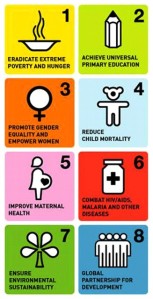Despite the wide range of criticism facing it, the United Nations has a good reputation of being in the forefront of peacekeeping, peacebuilding, conflict prevention and humanitarian assistance activities. This fact is proven by the Nobel Peace Prize it was awarded in 2001 and its success in assisting more than 170 peace settlement negotiations that have ended regional conflicts around the world. Even now, the UN is currently working on sixteen peacekeeping projects in places such as Darfur, Lebanon and South Sudan. However, as effective as the UN could be, it could not solve all the major problems of the world. Funding is one big constraint faced by the UN. Hence, it is rational that certain activities engaged by the UN should be handed over to the states in question to allow the funds be transferred to more important activities, such as humanitarian assistance activities in very poor countries. One way of doing this, without leaving the countries in question in a state of helplessness, was brilliantly illustrated in one of the projects implemented by United Nations Office for Project Services (UNOPS) called Enabling Girls’ Education in South Sudan. This Italian-funded project in Lakes and Eastern Equatoria states included building schools, overcoming education barriers and training teachers to ensure that more girls in the region are provided with necessary formal education. One aspect of this project was to include the local community in the project, which was important in order to sustain what had been achieved. For example, mothers and other women in the community were taught and trained to make sanitary pads for the girls as the lack of proper sanitation was reported to be one of the leading factors preventing girls from even coming to school. Agriculture maintenance was also taught as this would secure the provision of food for the girls (and boys) in the school. These two examples illustrate the concept of community engagement and it is this concept that would sustain the positives achieved through the project and at the same time, it would also help to relax the financial strains imposed on the funding bodies. With such funds saved, those funds can be used to finance many other deserving projects. Another project was the farmer education programme in Myanmar. With funding coming from UNOPS’ very own Livelihood and Food Security Trust Fund (LIFT), the programme aimed to alleviate the challenges facing farmers which are lack of good quality seed and shortage of appropriate labour. Assistance given to the farmers in the highlands of Shan and Kachin was designed to be sustainable for the 4700 households living there. Farm field schools were established to teach the farmers to enhance soil fertility and to use the right agricultural tools. The inclusion of local firms and mechanics to construct tools and offer maintenance services ensured that locally-produced weed control technology, high-yield seeds and low-technology tools were adopted in the rural community. Development should be a two-way initiative. Efforts should come from both the world at large and the countries in conflict. In some cases, the one-way initiative came from the country in conflict itself, without any significant amount of help from the international community. Such a case was the mass slaughter in Rwanda in 1994, where about 800,000 people were killed over a period of 100 days while, as President Clinton stated, “the world community did not do…much [to prevent this].” The people of Rwanda basically stood back on their feet without anyone lending a hand to them, particularly the women, who were left widowed after the massacre; they (the women) just rolled up their sleeves and started rebuilding the nation- moving the private sector forward by becoming entrepreneurs and shaping the public sector by joining the parliament. Today, Rwanda has the highest percentage of women elected in parliament in the world while the United States ranked 75th and Rwanda achieved most of these accolades, that other nations now envy, all by themselves. However, if the international community had helped Rwanda in the first place, these achievements would not have been made against a backdrop of such onslaught. Valerie Amos, the Under-Secretary-General for Humanitarian Affairs and Emergency Relief Coordinator for the UN, who gave a speech at the Temple of Peace last November, summed it well when she said, “I look to our young people with their interest in global connectivity, their impatience with the slow pace of change [and their] disdain that what we could achieve…still [have] not [been achieved].” The world desperately needs more altruists, especially from developing countries, to lend their hands. How can we cherish the UN for being representative of the whole world if we do not contribute by actually representing our respective countries?
References
- Remarks to the Welsh Centre of International Affairs ‘Caught in the Crossfire: Humanitarian assistance in times of conflict’
- http://www.un.org/en/peacekeeping/operations/current.shtml
- http://historymatters.gmu.edu/d/5478/
- https://www.unops.org/english/News/UNOPS-in-action/Pages/Empowering-girls-by-improving-education-in-South-Sudan.aspx
- http://www.theatlantic.com/magazine/archive/2001/09/bystanders-to-genocide/304571/
- http://www.ipu.org/wmn-e/classif.htm
- http://www.foreignaffairs.com/articles/141075/swanee-hunt/the-rise-of-rwandas-women
- https://www.unops.org/english/News/UNOPS-in-action/Pages/Increasing-rice-production-in-Myanmar.aspx
Article written by Amin Rali

